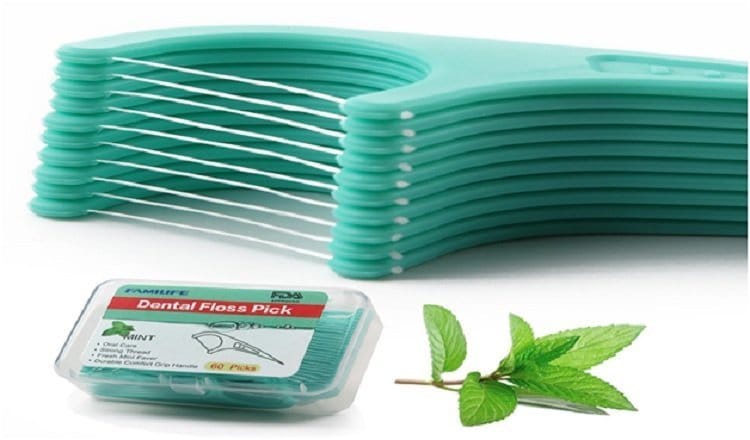Although flossing can cause injuries and bleeding if not practiced correctly, it is a necessary component of an ideal oral hygiene.
Ask any dentist and you’ll likely be told that flossing is highly recommended after brushing your teeth or eating. There is no other object to clean interdental dirt and as such flossing is essential for maintaining good oral health. In this article we’ll try to go over all the advantages and disadvantages of using flossing.
Let’s start by mentioning that the use of this simple thread prevents many diseases of the gums. By removing the plaque between the teeth, it preserves the general health of the mouth. If food remains are not removed, the bacteria can attack the enamel of the teeth, cause bad breath or cause the loss of one or more teeth. Sure, we are all busy and who has the time to floss after every meal. However, if you make a habit of flossing, the benefits far outweigh the time you’ll spend doing it. To get the most out of it you will have to learn to use it in the right way.

How to choose?
Simply choose the thread that suits your needs. Heed your dentist’s recommendations, your personal preferences and the shape of your mouth. You can get flossing treads with or without flavor, waxed or without wax, for all sensitivities. When using, cut about one and a half foot (18 inches) and roll the ends several times around your index fingers. Hold also with the thumbs. In total you will use around 4 inches inside your mouth: it is important that that part is tight.
Flossing movement
The ideal movement is to saw, back and forth, several times and reaching the gum:
- At that time you must move the thread in a “C” motion to the tooth;
- Hold well and go through the side of the tooth;
- All maneuvers must be gentle so as not to hurt the gums or cause bleeding.
Then repeat the same procedure with the other teeth and molars. Do not forget any! When you finish use mouthwash or warm water to remove the remains that are left in the mouth.
How long is the process?
It usually takes between one and three minutes to do full floss, depending on the individual and the experience. If you get easily bored, try to play some music while you floss to make it more fun. In this way you will not forget to fulfill the daily routine. These several minutes every day are an insignificant time for the rewards they provide: keeping your teeth and gums healthy and avoiding oral diseases. Of course, this is not the only thing we must do for a good oral hygiene.
Obviously, we should also brush our teeth, at least when getting up and before going to sleep, change the brush every 3 months and visit the dentist twice a year.
Is dental floss used before or after brushing?
This is a very frequent question and one often asked during consultation with a specialist. And with good reason – there are pros and cons to flossing both before brushing your teeth and afterwards. Generally, it is accepted that it’s better to floss before you wash your teeth, regardless if you are using dental floss picks as part of your dental hygiene routine or not.
But, even if you floss after, the thread eliminates everything that the brush could not reach.
For dentists, the fact that we use dental floss is enough, no matter the exact moment in which we do it. There are even people who only remove the remains of food with floss, without brushing – for example, if they are in the office or on the street.
Use both flossing and brushing before going to bed because during night bacteria can develop more easily and can cause infections.

